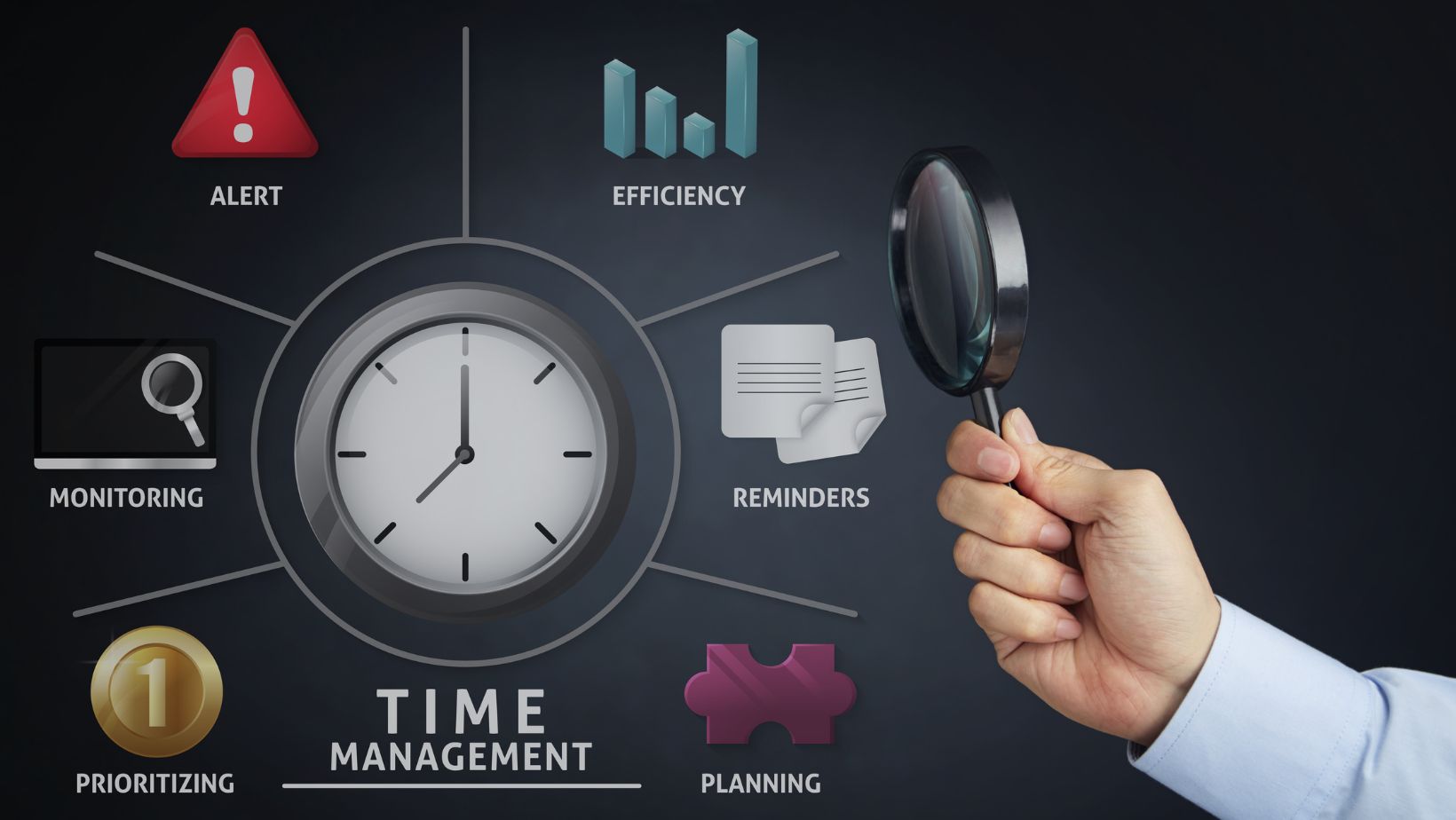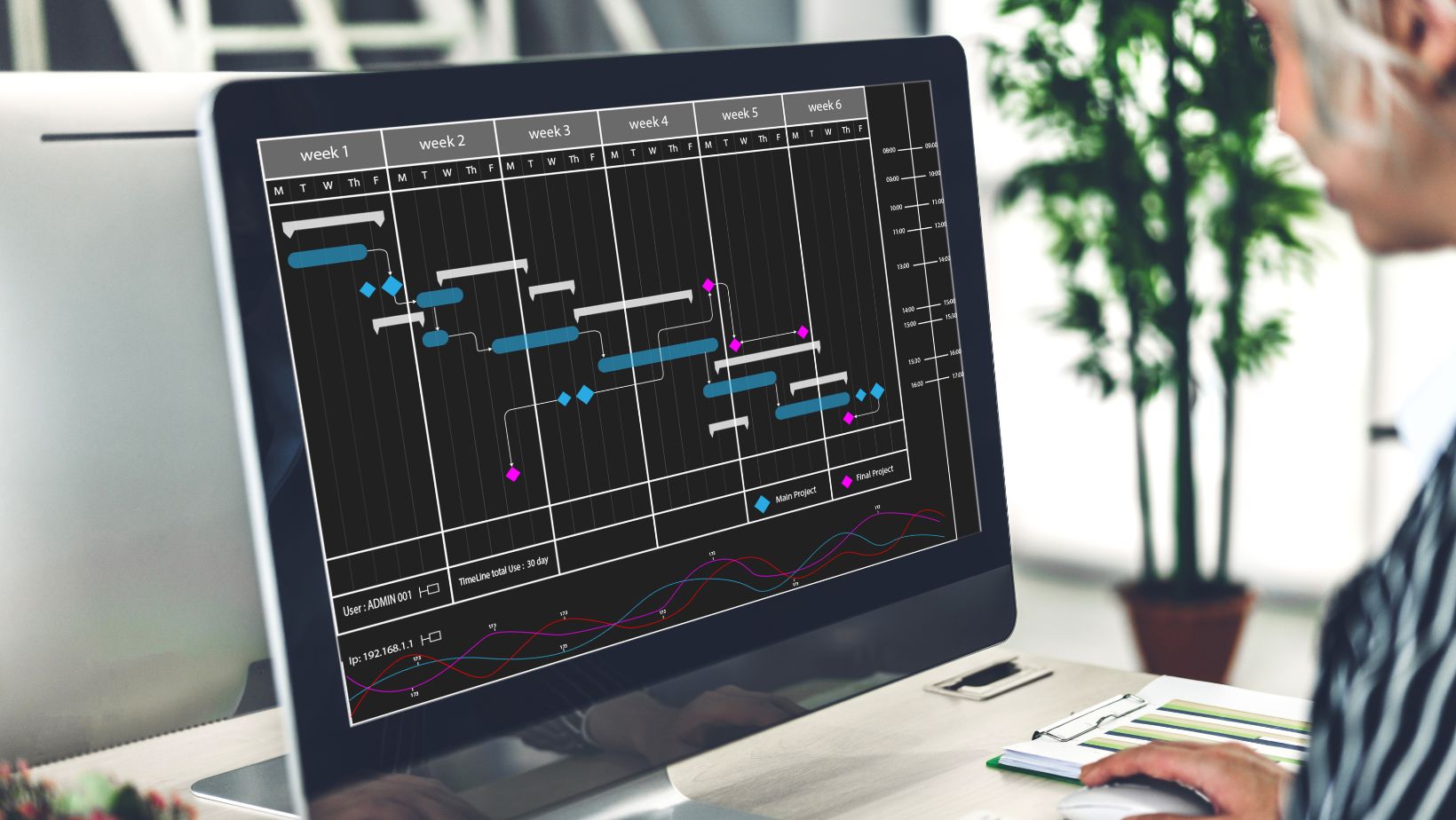Have you ever wondered how much time you’re actually spending on your work tasks? Time is a valuable resource, and as the saying goes, ‘Time is money.’ That is the best way of saying how important tracking hours for work is.
With efficient work hour tracking solutions, you’re not just monitoring hours, but you’re also increasing productivity, enhancing performance, and most importantly, maximizing profitability.
But how do you choose the right tracking hours for work solutions? Stay with us as we explore different time-tracking tools and strategies that can revolutionize your workflow and bottom line.
Key Takeaways
•Efficient work hour tracking is crucial for improved productivity, resource optimization, and accurate ROI calculations.
•Tools like Toggl, RescueTime, Clockify, and Harvest offer tailored solutions for varying work-hour tracking needs and preferences.
•Task prioritization and effective time management strategies maximize ROI and streamline processes for optimal productivity.
•Regular team training, collaboration, and use of productivity strategies boost efficiency and keep businesses competitive.
Understanding Work Hour Tracking
To maximize your team’s productivity, it’s crucial to understand work hour tracking – a system used to accurately measure and record an employee’s work time. This isn’t just about clocking in and out. It’s about gaining insights into how time is spent within your organization.
Work hour tracking allows you to see exactly where your employees’ hours are going. By analyzing the data, you can identify trends, spot inefficiencies, and make informed decisions about resource allocation. It isn’t about micromanaging, either. It’s a tool to empower your staff, giving them a clear view of their own productivity.
Accurate work hour tracking can help you spot overtime trends and manage workload balance. It can also support compliance with workplace laws, helping you avoid expensive litigation. Plus, it’s useful for project management, allowing you to estimate timelines and resources accurately.
In essence, work hour tracking is about transparency and insight. It’s a crucial component in managing your team’s time effectively. However, it’s not enough to just track hours – you need a system that’s easy to use, accurate, and provides actionable insights. But that’s a discussion for another day.
Importance of Efficient Time Management
Understanding the importance of efficient time management can significantly boost your team’s productivity and overall performance. It’s not just about doing more work in less time. It’s about ensuring you use your time wisely and effectively.
Let’s say you’re juggling several projects at once. How do you decide which to tackle first? Without efficient time management, you could end up wasting hours on tasks that aren’t as crucial, while the most important ones get sidelined. That’s why you need to prioritize. And here’s where efficient time management comes in. It helps you identify which tasks demand your immediate attention and which can wait.
Moreover, efficient time management reduces stress. When you’re in control of your schedule, you’re less likely to feel overwhelmed. It gives you a sense of direction, keeps your focus sharp, and makes you more proactive. Plus, it improves your work-life balance. You’re not perpetually racing against the clock, and you have time for other important things – like your family, hobbies, and rest.
In short, mastering efficient time management is key to enhancing productivity, reducing stress, and achieving a balanced life.
Traditional Vs. Digital Time Tracking
When it comes to tracking work hours, you’ve got two main options: the traditional method or the digital route. Let’s break down each one.
Traditional time-tracking methods often involve manual entry, usually on paper or through a simple spreadsheet. You might think it’s simple and straightforward, but it has some drawbacks. It’s time-consuming, prone to human error, and doesn’t provide real-time updates. It also lacks efficient data analysis, making it harder for you to see trends and make strategic decisions about your work hours.
On the other hand, digital time tracking is automated and efficient. It eliminates the risk of human error and saves you valuable time. Most digital tools even offer real-time updates and detailed analytics, helping you better understand your time usage patterns.
To sum it up, here are the key points to consider:
•Traditional methods are manual and prone to error
•Digital time tracking saves time and minimizes mistakes
•Real-time updates and analytics are usually only available with digital tools
•Your choice between traditional and digital depends on your specific needs and resources
Popular Work Hour Tracking Tools
Now, let’s dive into some of the top tools you can use to efficiently track your work hours.
Toggl is a game-changer for anyone who works on multiple projects. It’s easy to use, allowing you to switch between tasks with a simple click. You can even add tags to categorize your tasks for more accurate reporting.
RescueTime is another great tool, especially if you’re concerned about productivity. It runs in the background of your computer, tracking how you spend your time. It’ll give you a detailed report, showing you where you might be wasting time and where you can improve.
For teams, consider using Clockify. It’s free and allows everyone to track their time on different projects. Plus, it offers detailed reports to help you see how much time is spent on each project.
Last but not least, there’s Harvest, which is excellent for freelancers. It lets you track time, log expenses, and invoice clients all from one place.
Evaluating Your Time Tracking Needs
Before choosing a time-tracking solution, it’s crucial to evaluate your specific needs and the demands of your workspace. You’ll want to reflect on your current system, assess your team’s needs, and identify the areas for improvement.
Consider the following key points:
•Assess your current system: What are its strengths and weaknesses? How could it be improved?
•Identify the needs of your team: Are there specific functionalities they need? Do they prefer a mobile or desktop application?
•Consider your budget: How much are you willing to spend on a solution? Remember, time-tracking tools are an investment that can lead to increased productivity and profitability.
•Think about integration: Will the tool easily integrate with your existing software and systems? Seamless integration can save you time and resources in the long run.
Understanding your unique needs will help you select the right tool. It’s not about getting the most expensive or popular software. It’s about finding a solution that aligns with your goals, fits within your budget, and, ultimately, enhances your team’s productivity.
Implementing Time Tracking Solutions
Once you’ve found a time-tracking solution that meets your team’s needs and fits within your budget, it’s time to roll it out effectively. You’ll want to ensure that it’s fully integrated into your workflow and that all team members are trained to use it properly.
Start by familiarizing yourself with the system. Learn its ins and outs so you can answer any questions your team may have and provide guidance. Then, hold a training session where you walk your team through the software. Demonstrate how to log hours, set up projects, and generate reports. Make sure everyone understands the importance of accurate time tracking and the role it plays in productivity and profitability.
Next, set clear expectations. Your team should know when and how often they’re expected to log their time. Regular reminders can help reinforce this. Also, consider implementing a policy where hours must be logged before employees leave for the day.
Achieving Profitability Through Efficiency
As you solidify your team’s time-tracking habits, you’ll begin to notice an uptick in efficiency, paving the way to enhanced profitability. Efficient time tracking not only helps in managing resources better but also identifies areas where time’s being wasted. This newfound efficiency, coupled with effective cost control, can lead to improved profitability.
Here’s a four-point strategy to leverage efficiency for profitability:
•Set Clear Objectives: Begin by defining concrete goals. Knowing what you’re working towards can streamline efforts and eliminate unproductive activities.
•Analyze Time Logs: Time tracking solutions provide valuable data. Analyze this to understand where time is being spent and identify the scope for improvement.
•Prioritize Tasks: Not all tasks are equally important. Use tools like the Eisenhower box to prioritize tasks and focus on what’s most beneficial.
•Invest in Training: An efficient team is a trained team. Regular skill upgrade sessions ensure your team is always at the top of their game.
Conclusion
So, you’ve explored the world of work-hour tracking, seen its importance, and learned about various tools.
You’ve evaluated your needs and considered implementation. Remember, effective time management isn’t just about tracking time, it’s about boosting productivity.
Invest in the right solution and watch your profitability soar. After all, time is money.
Make every second count, and let the efficiency of your operations be your ticket to success.




More Stories
Windows VPS vs Linux VPS: Which One Should You Choose?
How to Track Your Fitness Goals as a Student: 5 Essential Apps
What Kind of Programmers Do Companies Want to Hire in 2025